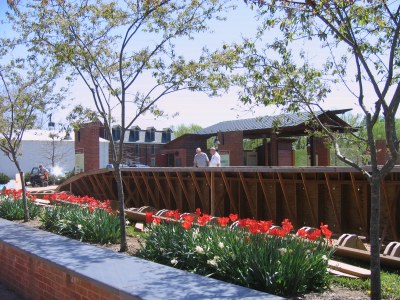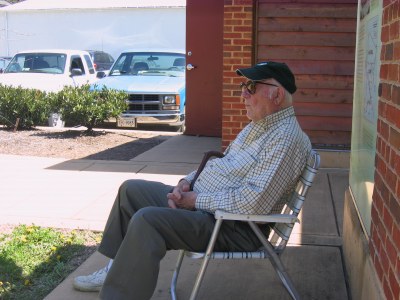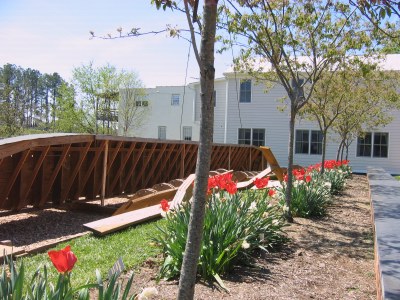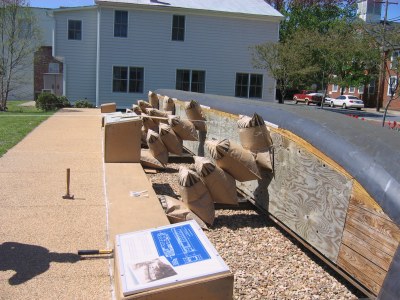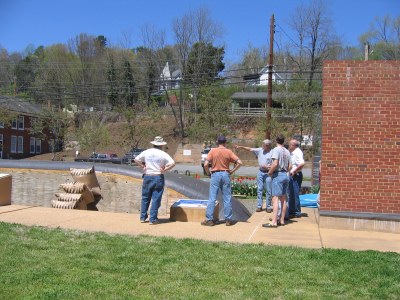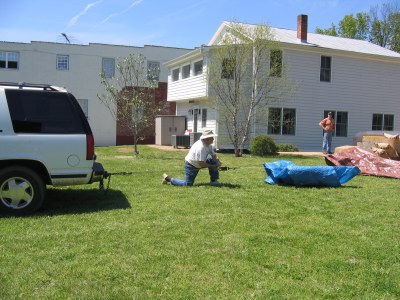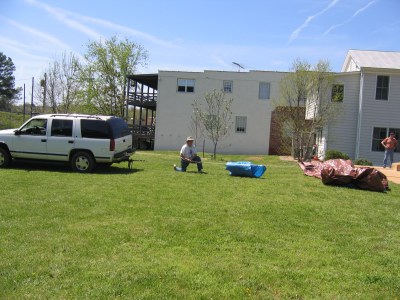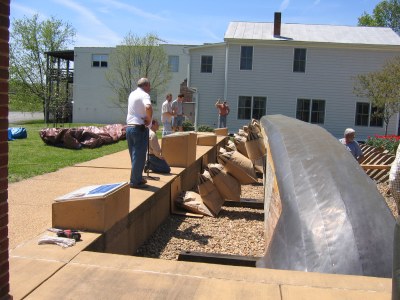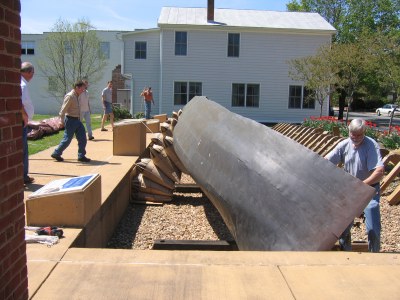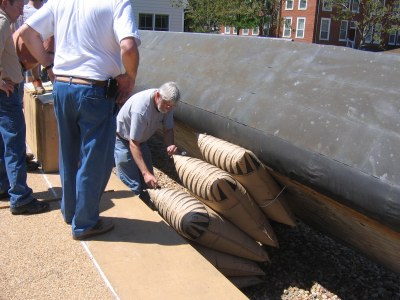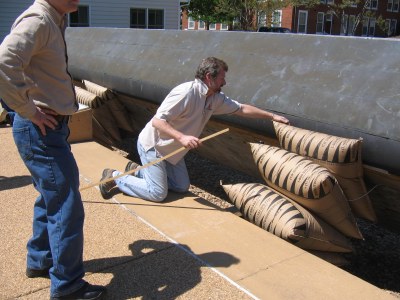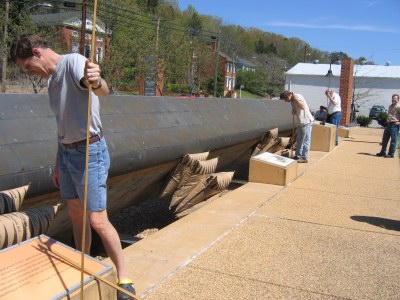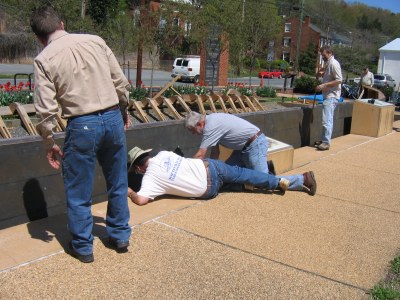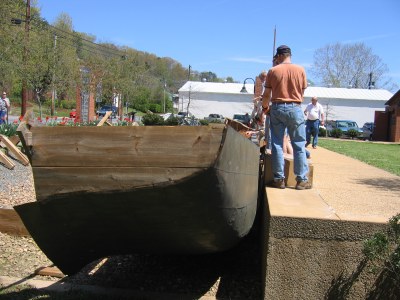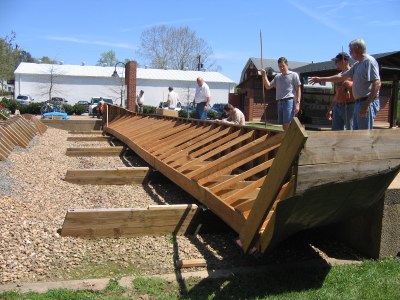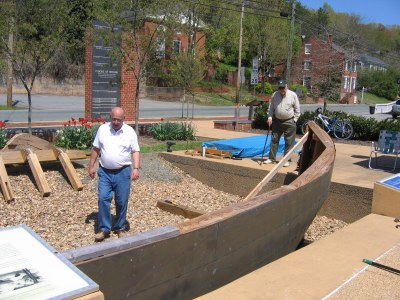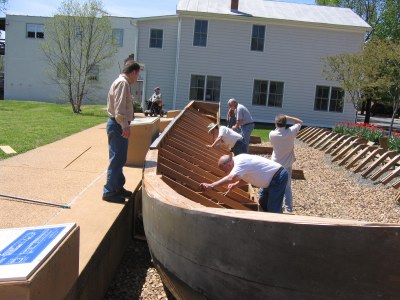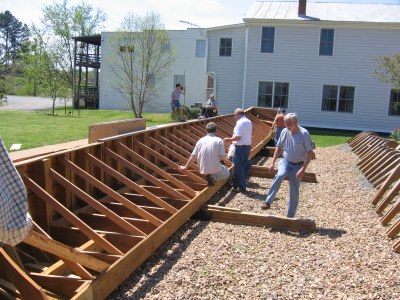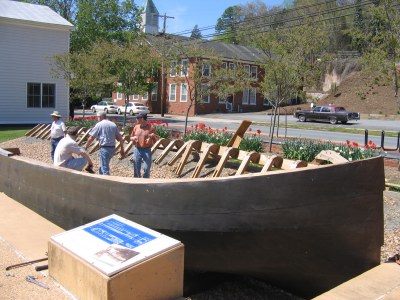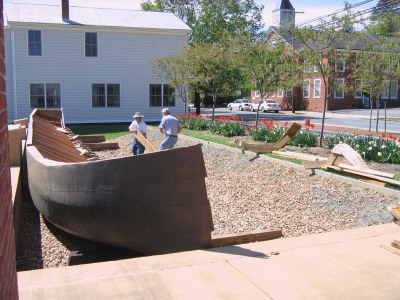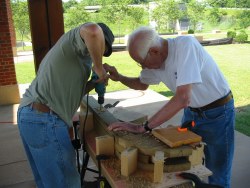 |
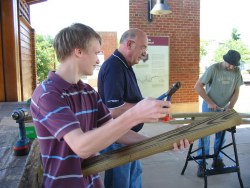 |
Rib sections are placed in a jig and drilled prior to assembly
|
Vanya cleans up the splinters from drilling prior to assembly
|
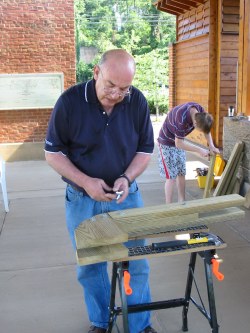 |
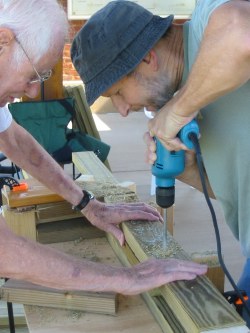 |
Barry assembles chines with vertical rib parts. He inserts the galvanized carriage bolts and tightens with washers and nuts
|
Bill Schneider keeps Bill Hyson's drilling vertical
|
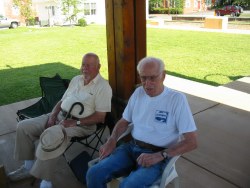 |
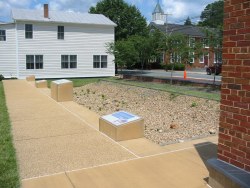 |
Jesse and Bill take a break
|
Boat slip where the packet boat will be exhibited
|
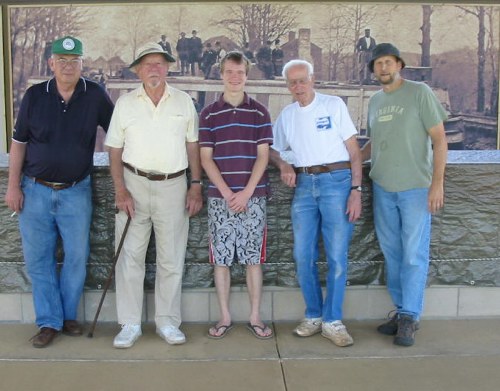 |
L-R: Barry Grove, Jesse Grove, Vanya Grove, Bill Schneider, Bill Hyson
Assembly work crew on July 8, 2006
|
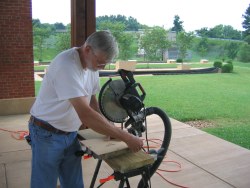 |
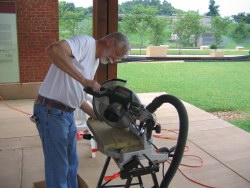 |
Tim using a template for a chine.
|
Making a precision cut with the laser miter saw.
|
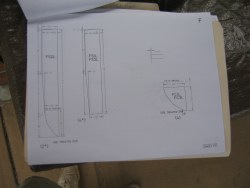 |
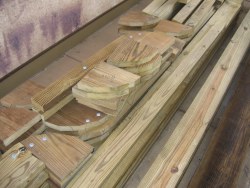 |
One page of the plans with specifications for a rib module.
|
Stockpiling of the rib modules.
|
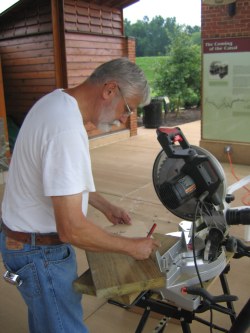 |
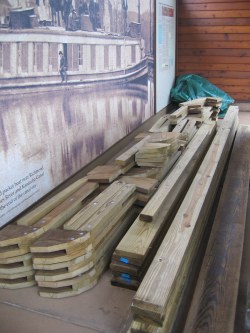 |
Preparing another chine.
|
Rib modules and raw materials.
|
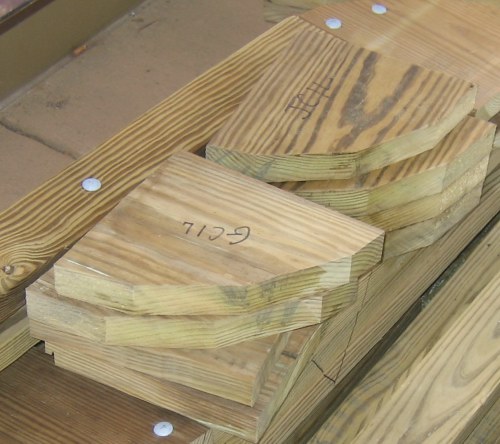 |
Precision cut chines awaiting assembly crew.
|
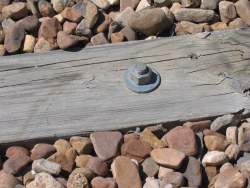 |
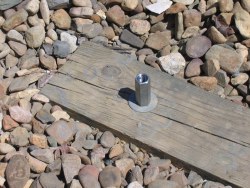 |
Anchor with Galvanized bolt and nut
|
Extender ready for additional galvanized threaded rod.
|
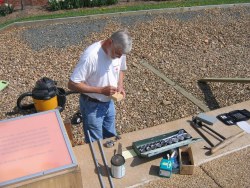 |
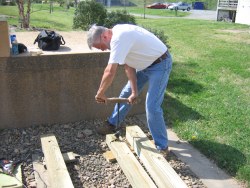 |
Tim preparing to level up the anchors to receive the packet boat.
|
Using an auger to bore holes for the threaded rods.
|
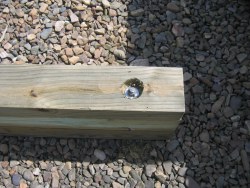 |
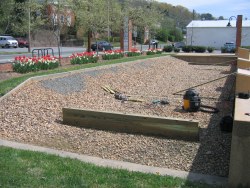 |
Raised anchor cradles to level the packet boat.
|
One done and four to go!
|
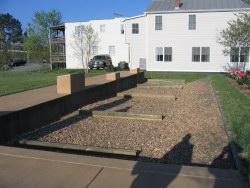 |
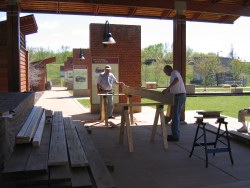 |
All five anchors now level.
|
Tim and Barry working on stringers to hold the ribs.
|
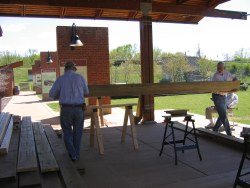 |
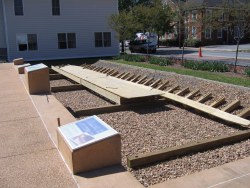 |
Oops. Wrong end so let's dance.
|
Wow, now we have some progress!
|
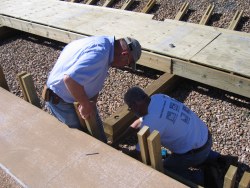 |
 |
Fine tuning some modular parts of the ribs.
|
OK. Let's think this out!
|
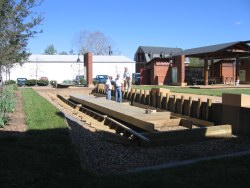 |
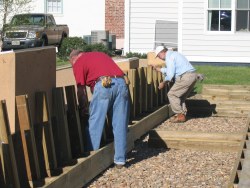 |
A good day's work!
April 21, 2007
|
Saturday, April 21, 2007
Barry Grove and Bill Cooper are tightening up bolts on the ribs.
|
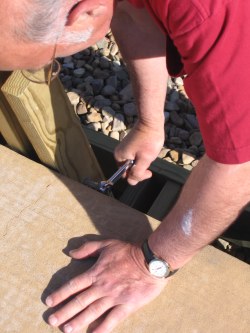 |
 |
Barry using the ratchet wrench!
|
Tim consults with his CAD plans as Barry and Bill use the saw.
|
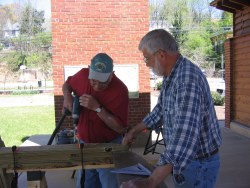 |
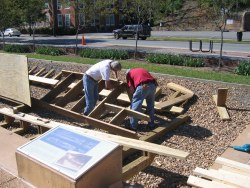 |
Barry drilling pilot holes in ribs. Tim supervising that all is plumb!
|
Assembly of the bottom and ribs near the front of the boat.
|
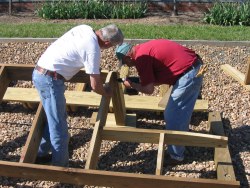 |
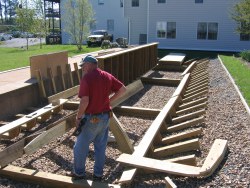 |
Assembly of ribs to the bottom frame.
|
Another good day's work. Saturday, April 21, 2007
|
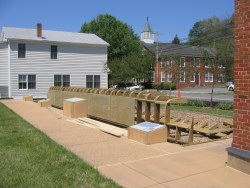 |
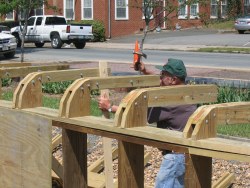 |
Right side of boat is standing on its side to allow joining of modules and cladding of hull.
|
Barry bracing the side to keep it stable while we work on it.
|
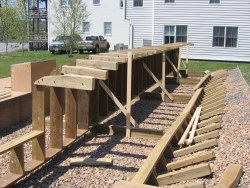 |
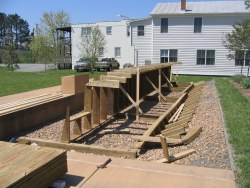 |
You can see the curve of the front of the boat beginning to take shape. Note the ribs for the left side of the boat lying on the ground.
|
All the modules have now been bolted together and cladding of the bottom of the hull has begun.
|
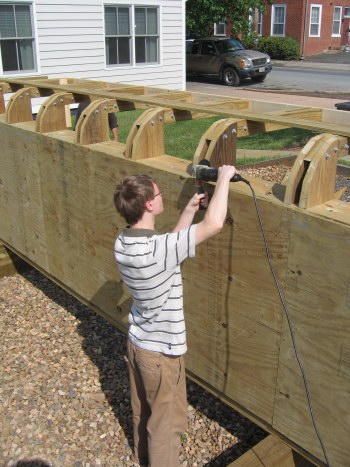
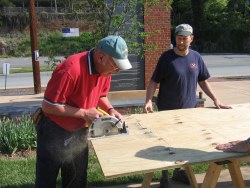 |
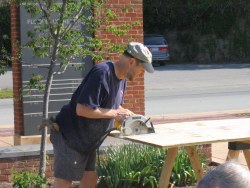 |
Barry cutting plywood for the hull.
|
Bill Hyson cutting additional plywood.
|
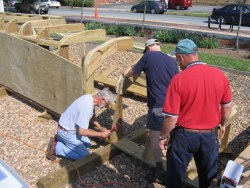 |
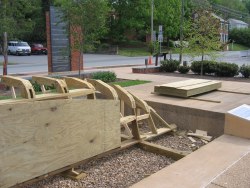 |
Tim attaching a rib near the bow.
|
The shape of the right side of the packet boat near the bow. The right side is standing upright at this point to allow application of the hull.
|
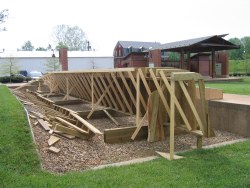 |
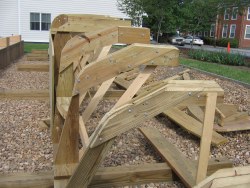 |
Looking from the stern at the right half of the boat.
|
Curve of the bow beginning.
|
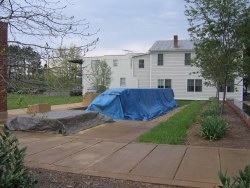 |
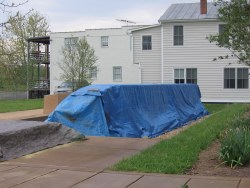 |
Covered up to protect from weather.
|
It takes a lot of tarp to cover this boat.
|
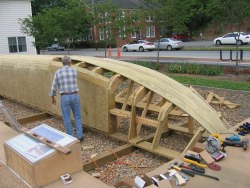 |
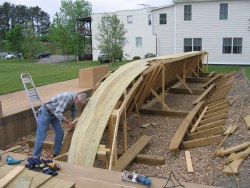 |
Hull taking shape. This is a time consuming process which requires a lot of patience.
|
Tim working out the curves needed for the bow.
|
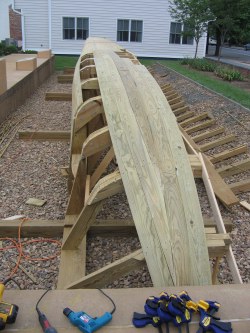 |
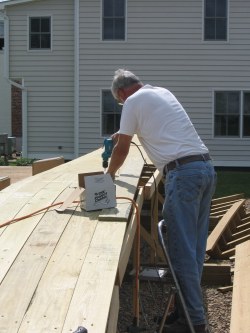 |
Ah! You can begin to see the shape.
|
Adding screws to hold the hull boards in shape.
|
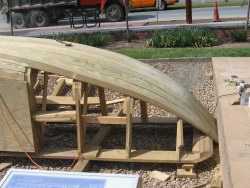 |
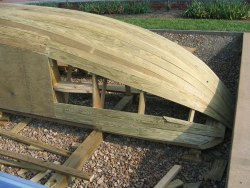 |
More work has been accomplished.
|
It is slow and tedious work to bend the boards to the compound curves required for the bow.
|
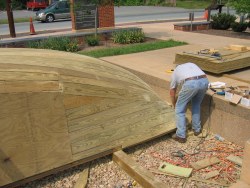 |
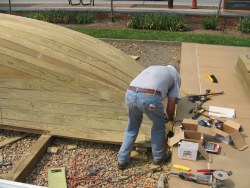 |
Finally, the last of the boards are in place for the right side of the hull at the bow.
|
Tim working with the grinder to smooth out some of the curves.
|
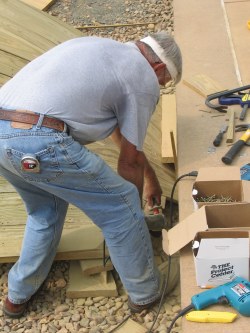
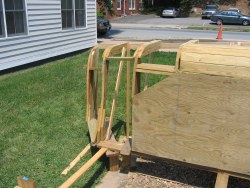 |
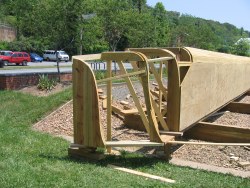 |
Rib assembly and fitting on the stern is now underway.
|
View from the stern of the last ribs and stern plate.
|
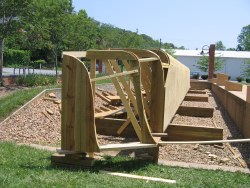 |
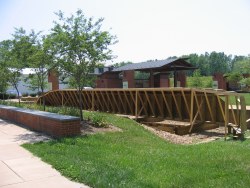 |
We will need to measure, cut, fit, and bend a lot of boards for the stern.
|
This shot gives us an idea of the length of this packet boat replica which is 69 feet!
|
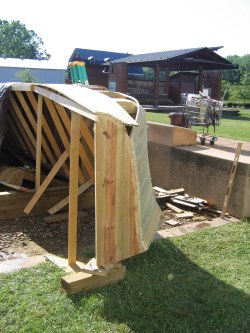 |
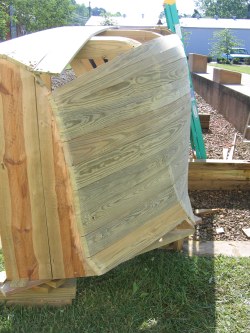 |
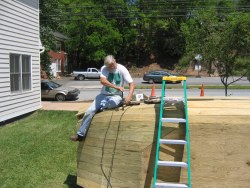 |
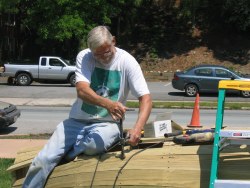 |
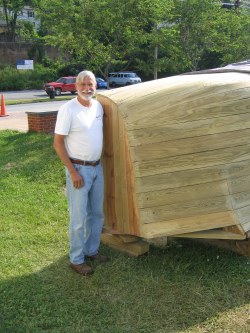 |
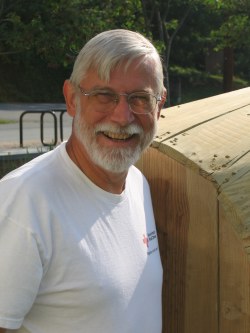 |
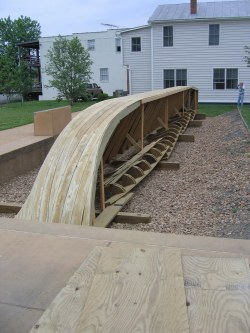 |
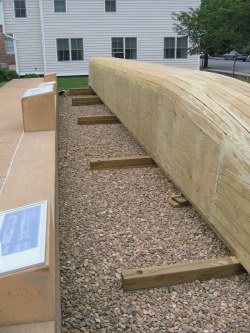 |
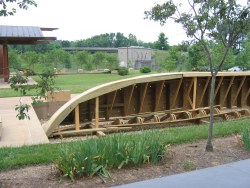 |
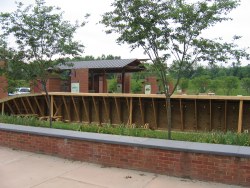 |
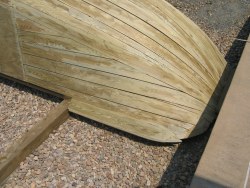 |
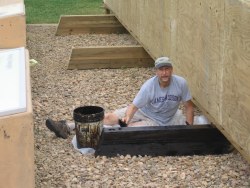 |
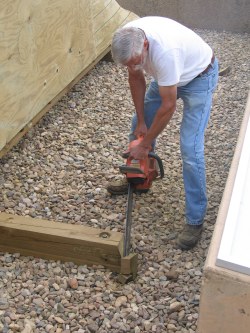 |
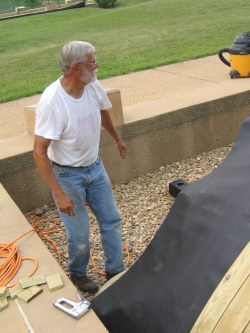 |
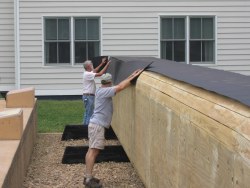 |
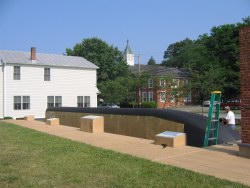 |
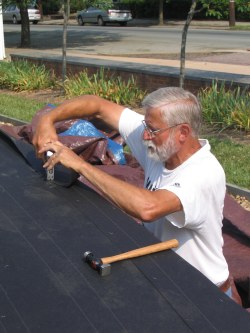 |
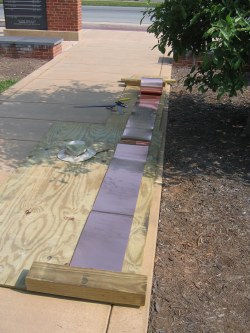 |
Applying last of 30# felt underlayment.
|
Rolling out copper for the hull cladding.
These are 100ft./100lb. rolls.
|
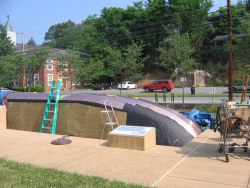 |
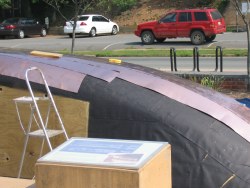 |
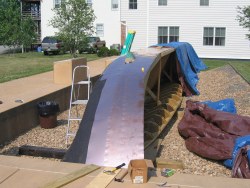 |
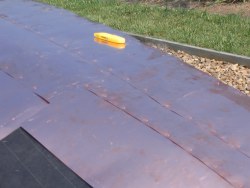 |
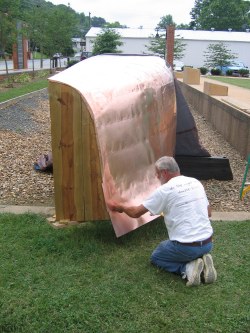 |
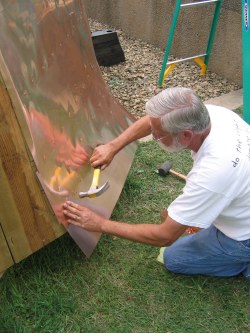 |
Tim installing the copper cladding to the hull.
|
Copper nails are used and the copper must be fitted and shaped to the compound curves of the hull.
|
